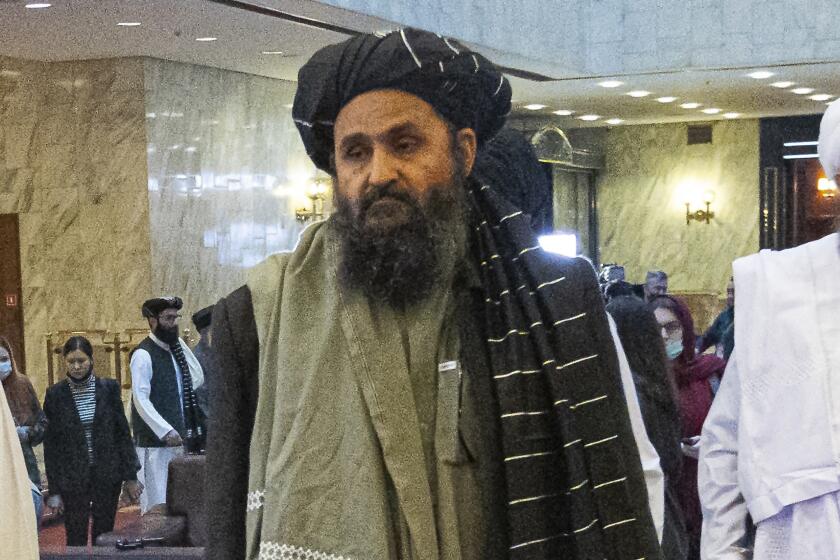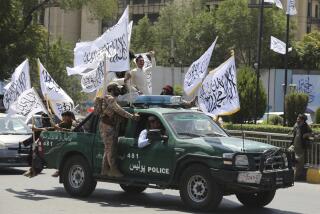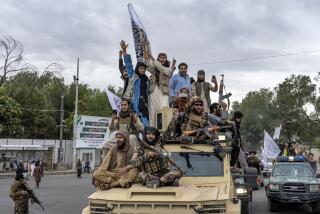Afghanistan’s Taliban orders women to wear head-to-toe clothing

Afghanistan’s Taliban rulers on Saturday ordered all Afghan women to wear head-to-toe clothing in public — a hard-line pivot that confirmed the worst fears of rights activists and was bound to further complicate the Taliban’s dealings with an already distrustful international community.
The decree says that women should leave the home only when necessary and that male relatives would face punishment — starting with a summons and escalating to court hearings and jail time — for women’s dress code violations.
It was the latest in a series of repressive edicts issued by the Taliban leadership, not all of which have been implemented. Last month, for example, the Taliban forbade women from traveling alone, but after a day of opposition, the rule has been ignored.
The United Nations Assistance Mission in Afghanistan said it was deeply concerned with what appeared to be a formal directive that would be enforced, adding that it would seek clarification from the Taliban.
“This decision contradicts numerous assurances regarding respect for and protection of all Afghans’ human rights, including those of women and girls, that had been provided to the international community by Taliban representatives during discussions and negotiations over the past decade,” the group said in a statement.
The decree, which calls for women to show only their eyes and recommends that they wear the head-to-toe burqa, evoked similar restrictions on women during the Taliban’s rule between 1996 and 2001.
“We want our sisters to live with dignity and safety,” said Khalid Hanafi, acting minister for the Taliban’s vice and virtue ministry.
The Taliban previously decided against reopening schools to girls above the sixth grade, reneging on an earlier promise and opting to appease its hard-line base at the expense of further alienating the international community. But this decree does not have widespread support among a leadership that’s divided between pragmatists and the hard-liners.
That decision disrupted efforts by the Taliban to win recognition from potential international donors at a time when the country is mired in a worsening humanitarian crisis.
As the Taliban takes power, Afghans — not to mention the rest of the world — must contend with a leadership that remains an unknown quantity for many.
“For all dignified Afghan women wearing Hijab is necessary and the best Hijab is chadori [the head-to-toe burqa] which is part of our tradition and is respectful,” Shir Mohammad, an official from the vice and virtue ministry, said in a statement.
“Those women who are not too old or young must cover their face, except the eyes,” he said. “Islamic principles and Islamic ideology are more important to us than anything else,” Hanafi said.
Senior Afghanistan researcher Heather Barr of Human Rights Watch urged the international community to put coordinated pressure on the Taliban.
It is “far past time for a serious and strategic response to the Taliban’s escalating assault on women’s rights,” she wrote on Twitter.
The Taliban was ousted in 2001 by a U.S.-led coalition for harboring Al Qaeda leader Osama bin Laden and returned to power after last year’s chaotic U.S. departure. The White House did not have immediate comment on the Taliban’s latest decree.
Since taking power last August, the Taliban leaders have been squabbling among themselves as they struggle to transition from war to governing, with hard-liners pit against the more pragmatic among them.
Infuriating many Afghans is the knowledge that many young Taliban leaders, such as Sirajuddin Haqqani, are educating their female relatives in Pakistan, while in Afghanistan, women and girls have been targeted by repressive edicts since the Taliban has taken power.
The Taliban edicts have been erratic. Girls have been banned from school beyond sixth grade in most of the country since the Taliban’s return. Universities opened earlier this year in much of the country. While a handful of provinces continue to provide education to all, most provinces closed educational institutions for girls and women.
In the capital, Kabul, private schools and universities have operated uninterrupted.
More to Read
Sign up for Essential California
The most important California stories and recommendations in your inbox every morning.
You may occasionally receive promotional content from the Los Angeles Times.











